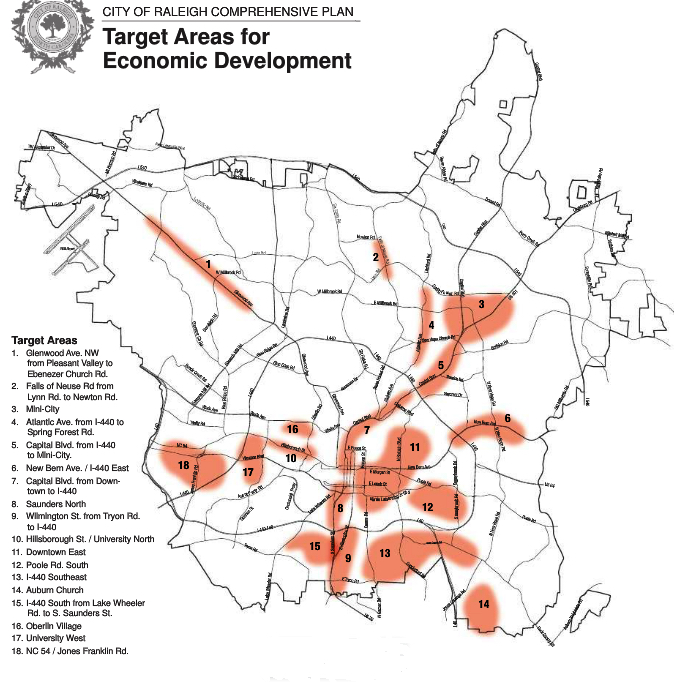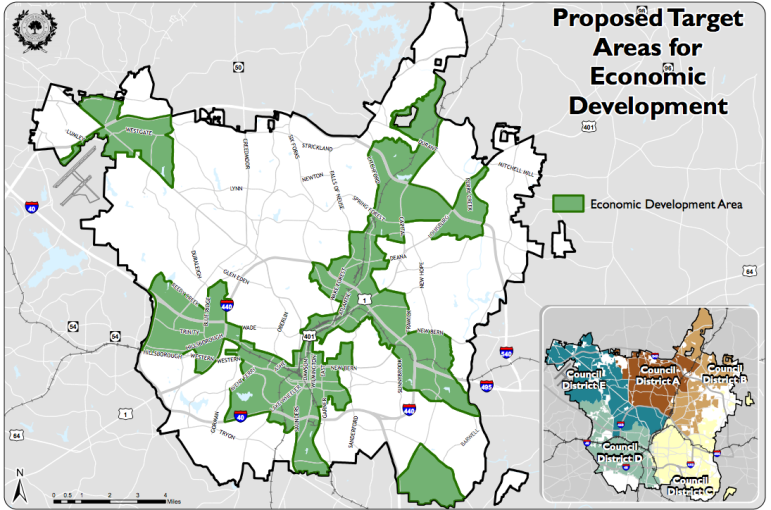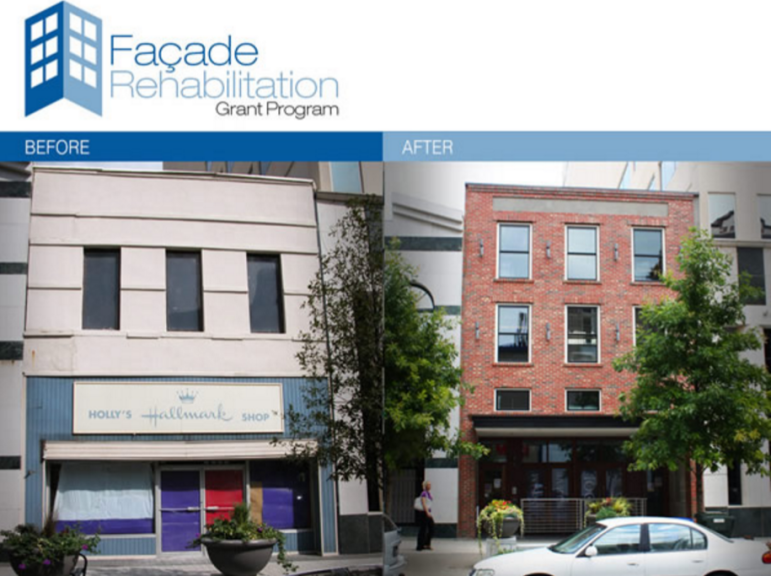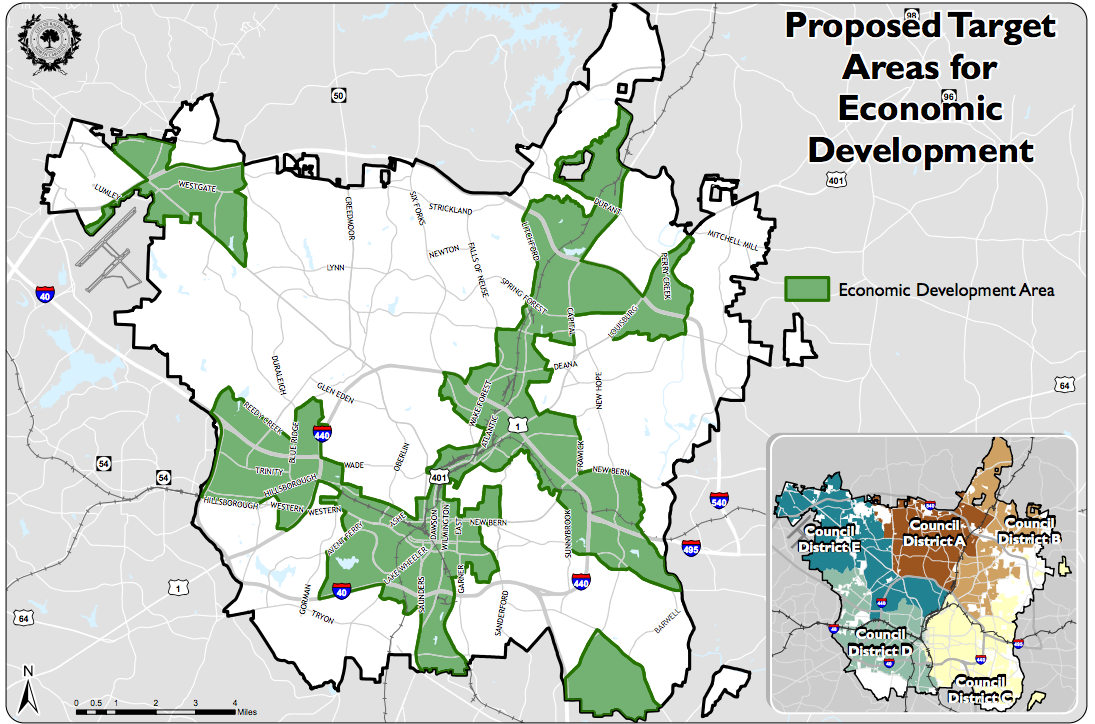As part of the planning process for Raleigh’s 2030 Comprehensive Plan, adopted in 2009, the City developed a map intended to highlight areas that “demonstrated a need for economic development intervention.”
Seven years later, that map is getting an upgrade.
“One issue with the map,” said Raleigh Planning Director Ken Bowers, “Is that is has fuzzy boundaries.”

City of Raleigh
The original map from the 2030 Comprehensive Plan
Bowers was presenting the new map alongside James Sauls at the first meeting of the Economic Development and Innovations Committee on Tuesday. The committee is overseen by Mayor Nancy McFarlane and Councilors Kay Crowder and Bonner Gaylord. Sauls is the city’s Manager of Economic Development.
When the initial map was drawn up, Bowers said, there were no incentive programs tied to the targeted areas, so boundary specificity wasn’t an issue.
“The desire to adopt geographic targets as part of the [economic development] tool kit moved us from a map with fuzzy to clear boundaries, ” he explained.
Bowers said they had also refined their method for determining which parts of the city qualified. The two main factors were areas with high poverty rates and a lack of residential zoning, and areas with a lot of industrial zoning.

City of Raleigh
The newly proposed map will require Council approval
The new map is being proposed as part of a text change ordinance that’s currently under review by the Planning Commission. If the ordinance is adopted by Council, it will clearly establish these new boundaries and allow businesses located within those economic development zones to qualify for larger grants from the City.
After asking how the map tied into the City’s overall strategy for growth — it doesn’t, per Bowers — Councilor Crowder asked whether there was a major difference between planning for growth in a city and planning for economic development.
“There’s not necessarily a need to provide incentive for growth,” Bowers explained.
“Economic development typically focuses on areas perceived to be lagging and needing some public sector intervention.”
One specific example of public sector intervention is the City’s Facade Grant, first implemented in the 1980s. The program allows business and property owners downtown and within certain pedestrian overlay districts to receive grants to help them fund upgrades or improvements to their buildings’ exteriors.
Roberta Fox, an Assistant Director of design and planning for the City, asked Tuesday that the areas of eligibility for the Facade Grant be extended to include the newly established economic development zones throughout Raleigh.
More than 120 businesses have received a total of nearly $1 million since the program was implemented, Fox said. Developer and restaurateur Greg Hatem has been a frequent recipient of these grants, she added.
Due to the limits on eligibility, however, Fox said they often have money left over — the program is allotted $50,000 annually — and have had to turn away businesses because they weren’t located within qualifying zones.
Broadening the eligibility criteria would allow for more businesses to take advantage of the funds, Fox said, and allow broader swathes of the city to benefit from its effects.

Fox said they were also considering increasing the scope of the grant to cover things like artwork and murals, which are not funded under the current program.
The Economic Development and Innovation Committee voted unanimously to send both items to full Council.
